Snowpark Migration Accelerator: Assessment Output - In Application¶
When the Snowpark Migration Accelerator (SMA) finishes analyzing your code, it generates assessment artifacts and displays “Analysis completed!” at the top of the page. Click “VIEW RESULTS” to access the assessment summary page.
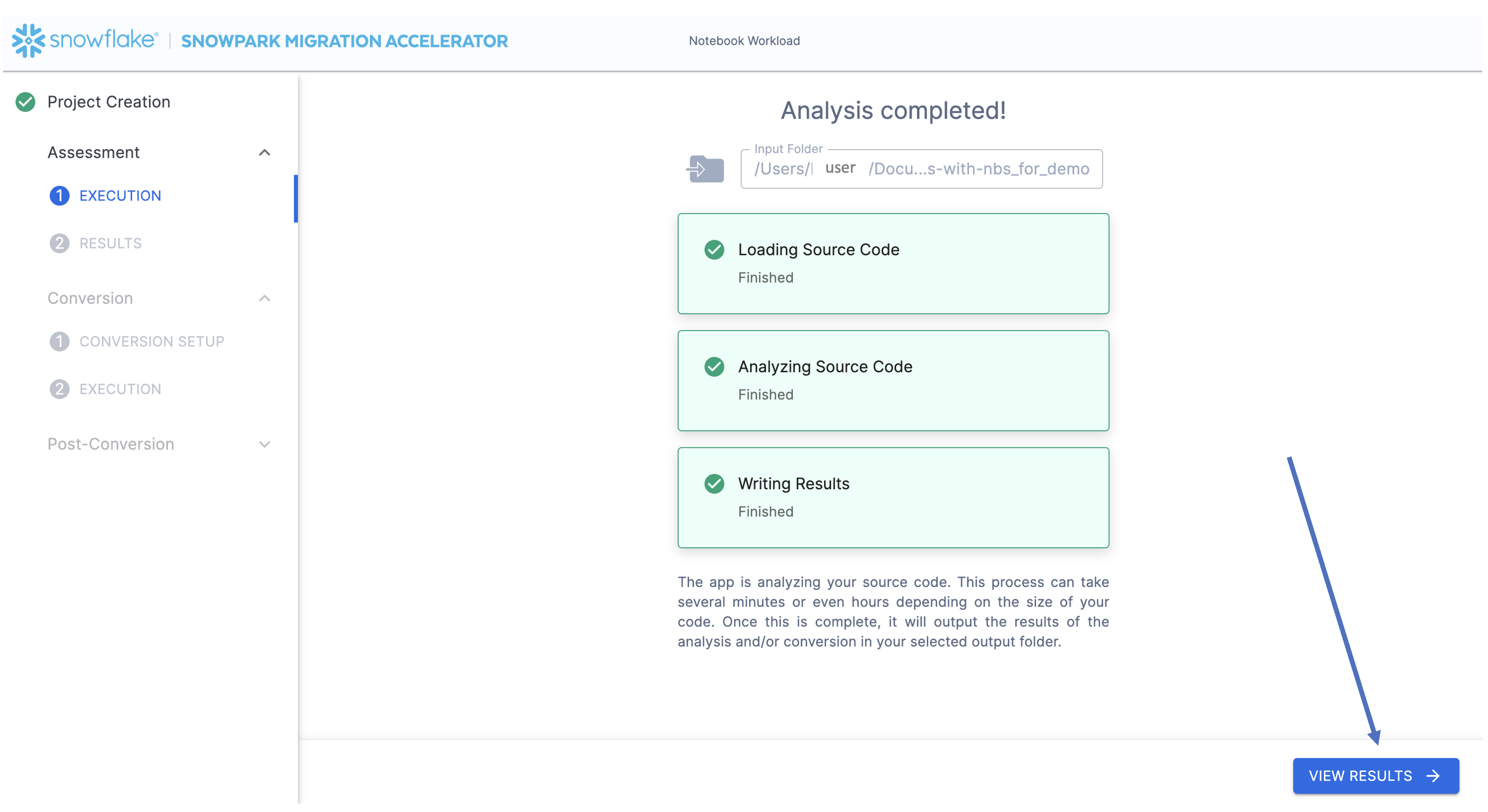
Readiness Scores¶
The assessment summary provides a concise overview, displaying only the available readiness scores from the current tool execution.
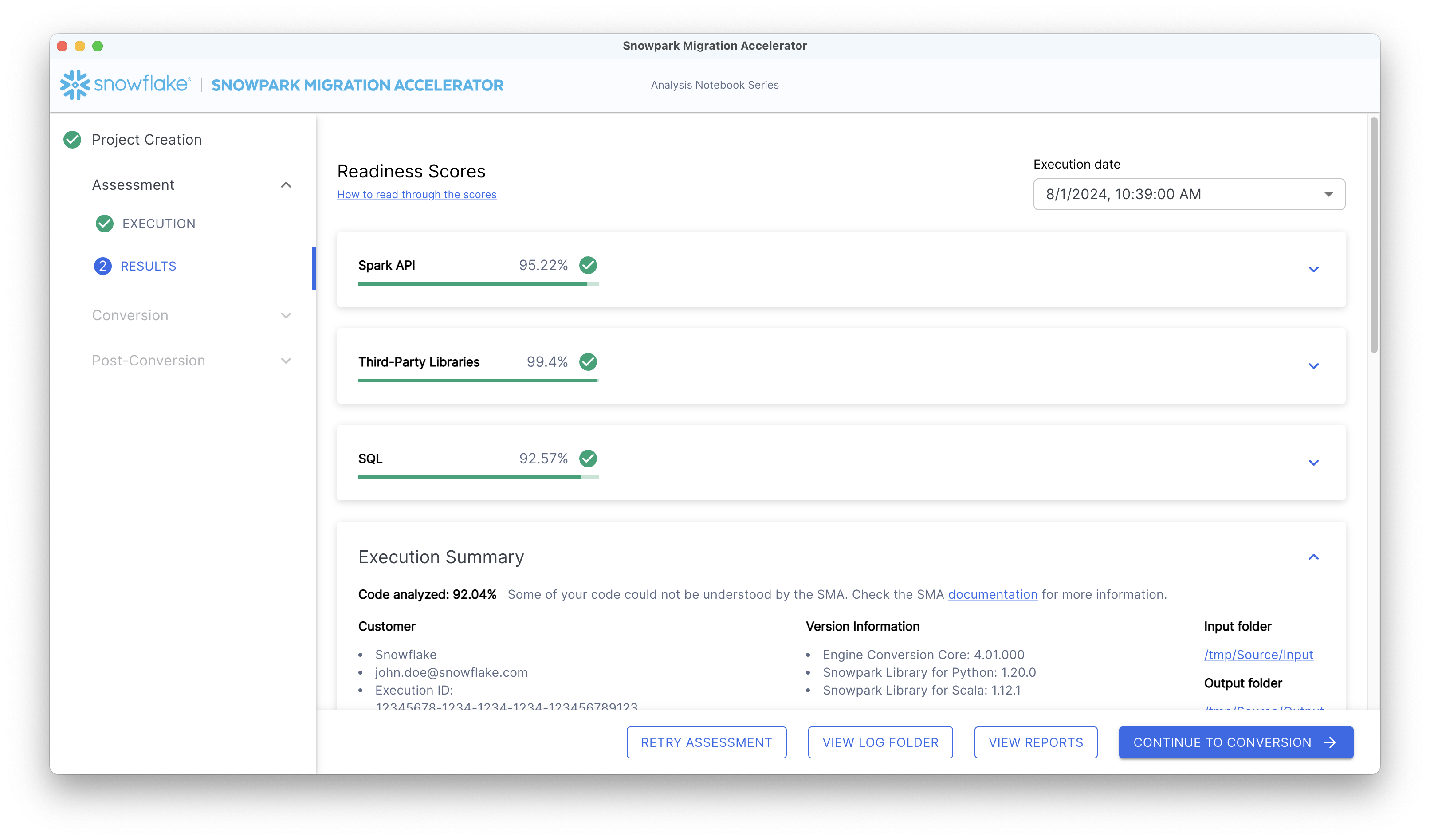
Snowpark Connect Readiness Score¶
The initial readiness score shown will be the Snowpark Connect Readiness Score. This is a measure of the found references to the Spark API and what percentage of them are supported by Snowpark Connect. This section will show:
Snowpark Connect Readiness Score: the percentage of references to the Spark API that are supported by Snowpark Connect.
What to do next: recommendations on what actions to take before continuing to the next step.
Understanding the Snowpark Connect Readiness Score: description of the readiness score and how to interpret it.
All Identified Spark API Usages: the total count of references to the Spark API found in this codebase
Spark API Usages Compatible with Snowpark Connect: the count of references that are supported by Snowpark Connect.
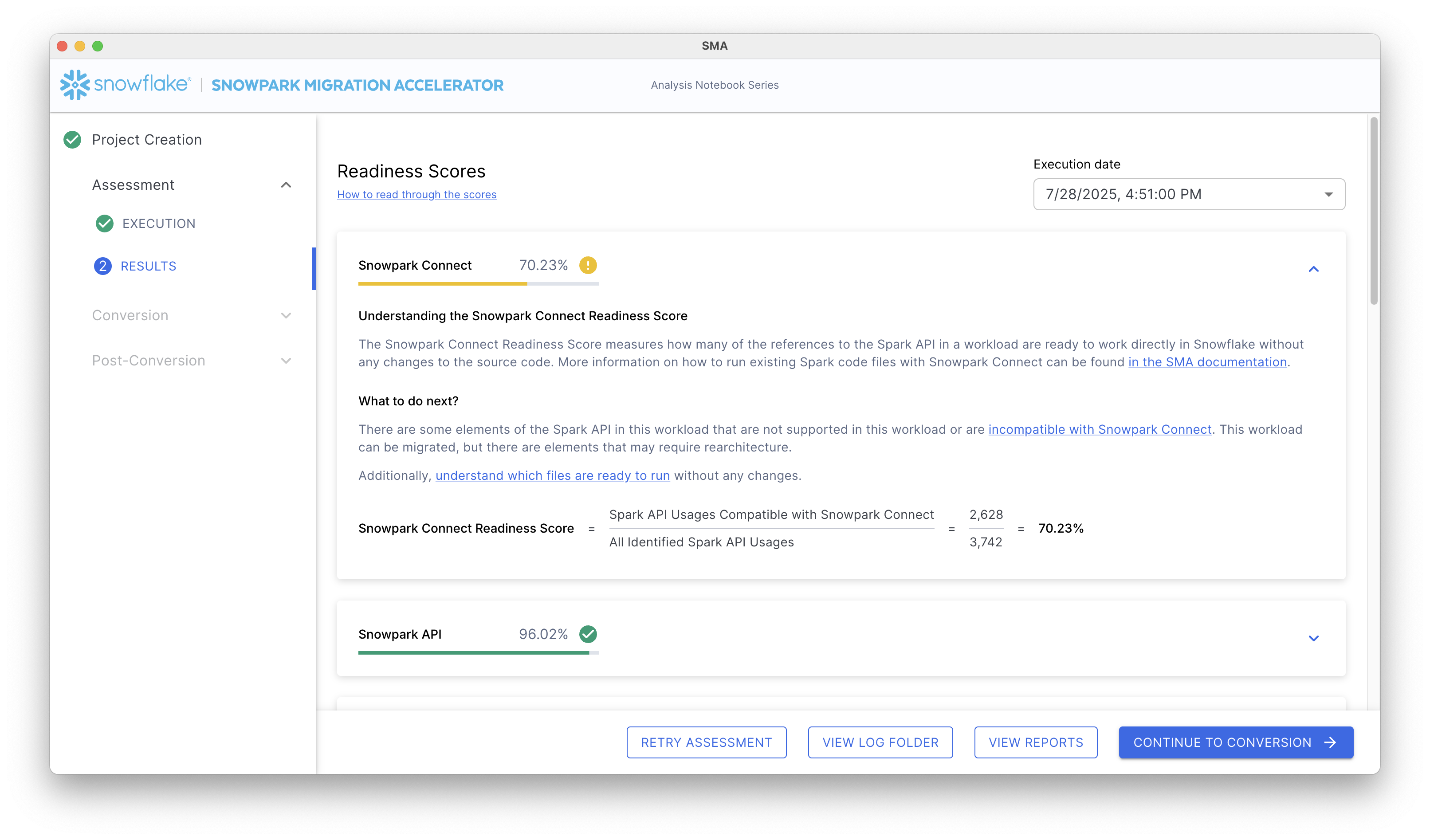
Spark API Readiness Score¶
The second readiness score shown will be the Spark API Readiness Score. This is a measure of the found references to the Spark API and what percentage of them are supported in Snowflake. This section will show:
Spark API Readiness Score: The percentage of Spark API functions in your code that can be converted to Snowpark
What to do next: Step-by-step guidance on required actions before proceeding
Understanding the Spark API Readiness Score: Detailed explanation of what the score means and how to use this information
Identified Usages: Total number of Spark API functions found in your code
Usages Ready for Conversion: Number of Spark API functions that can be automatically converted to Snowpark by SMA
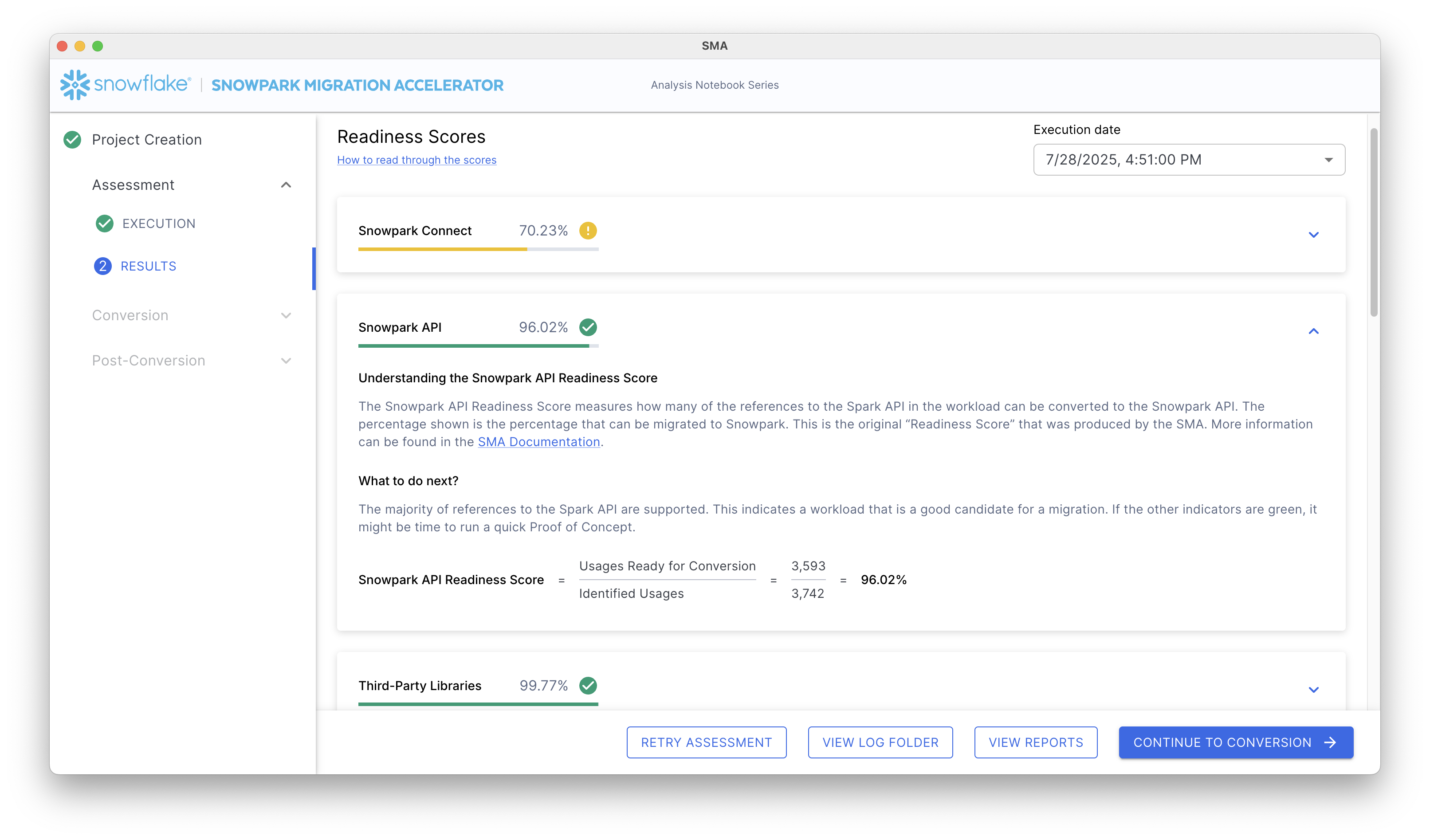
Third-Party Libraries Readiness Score¶
The third readiness score displayed is the Third-Party Libraries Readiness Score. This score indicates the percentage of third-party libraries that are compatible with Snowflake. This section displays:
Third-Party Libraries Readiness Score: Shows what percentage of your imported libraries are compatible with Snowflake.
What to do next: Provides step-by-step guidance on actions required before proceeding.
Understanding the Third-Party Libraries Readiness Score: Explains how to interpret the readiness score and what it means for your migration.
Identified Library Calls: Shows the total count of external library calls found in your code.
Library Calls Supported in Snowpark: Indicates how many of your library calls are currently supported by Snowpark.
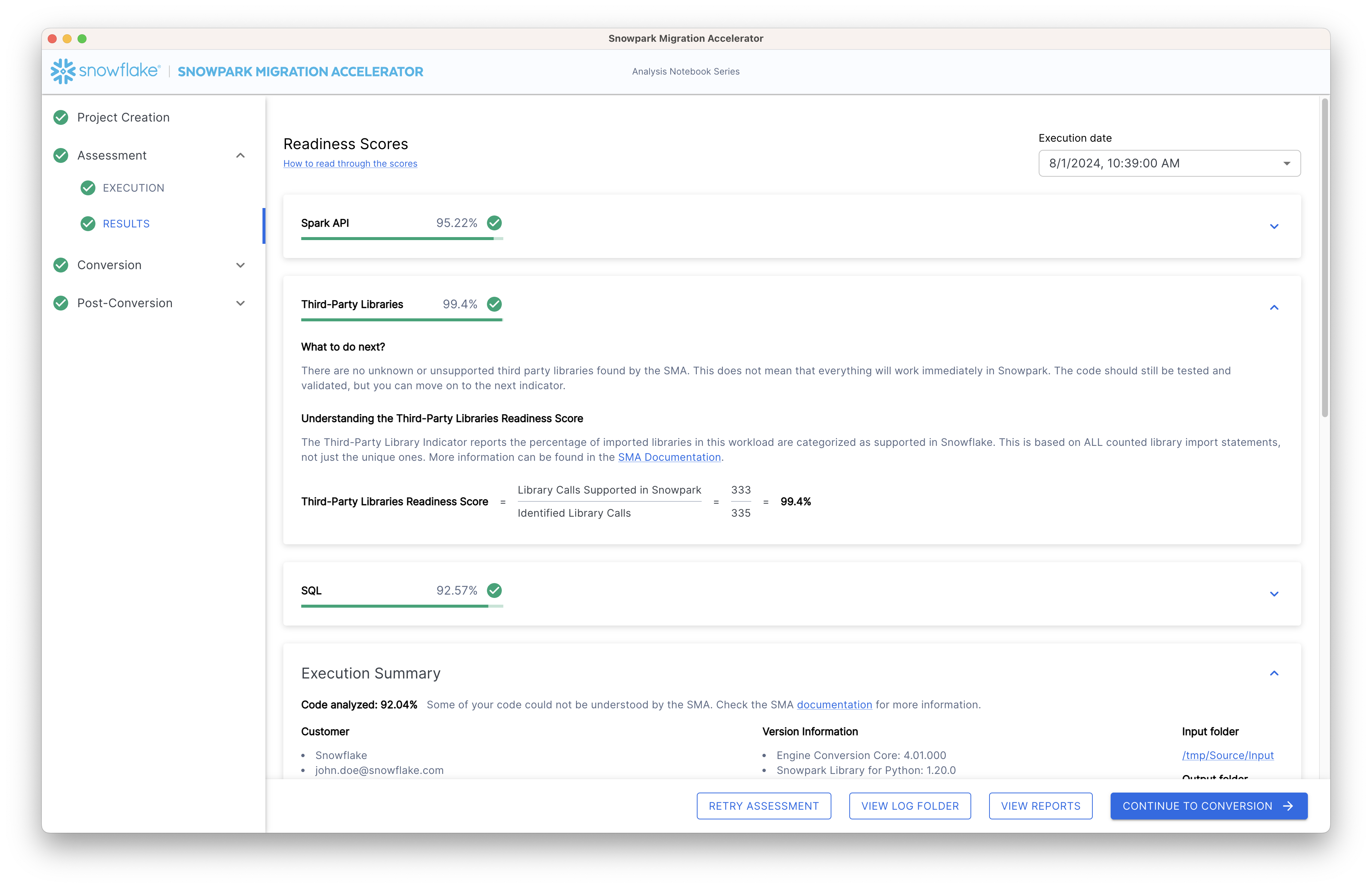
SQL Readiness Score¶
The fourth readiness score displayed is the SQL Readiness Score. This score indicates what percentage of SQL elements found in your code can be successfully converted to Snowflake SQL. This section displays:
SQL Readiness Score: Shows how many SQL elements in your code can work with Snowflake, displayed as a percentage.
What to do next: Step-by-step guidance on actions needed before proceeding.
Understanding the SQL Readiness Score: Explains what the SQL readiness score means and how to use this information.
Total Elements: Shows how many SQL components were found in your code.
Total Supported Elements: Shows how many of your SQL components are compatible with Snowflake.
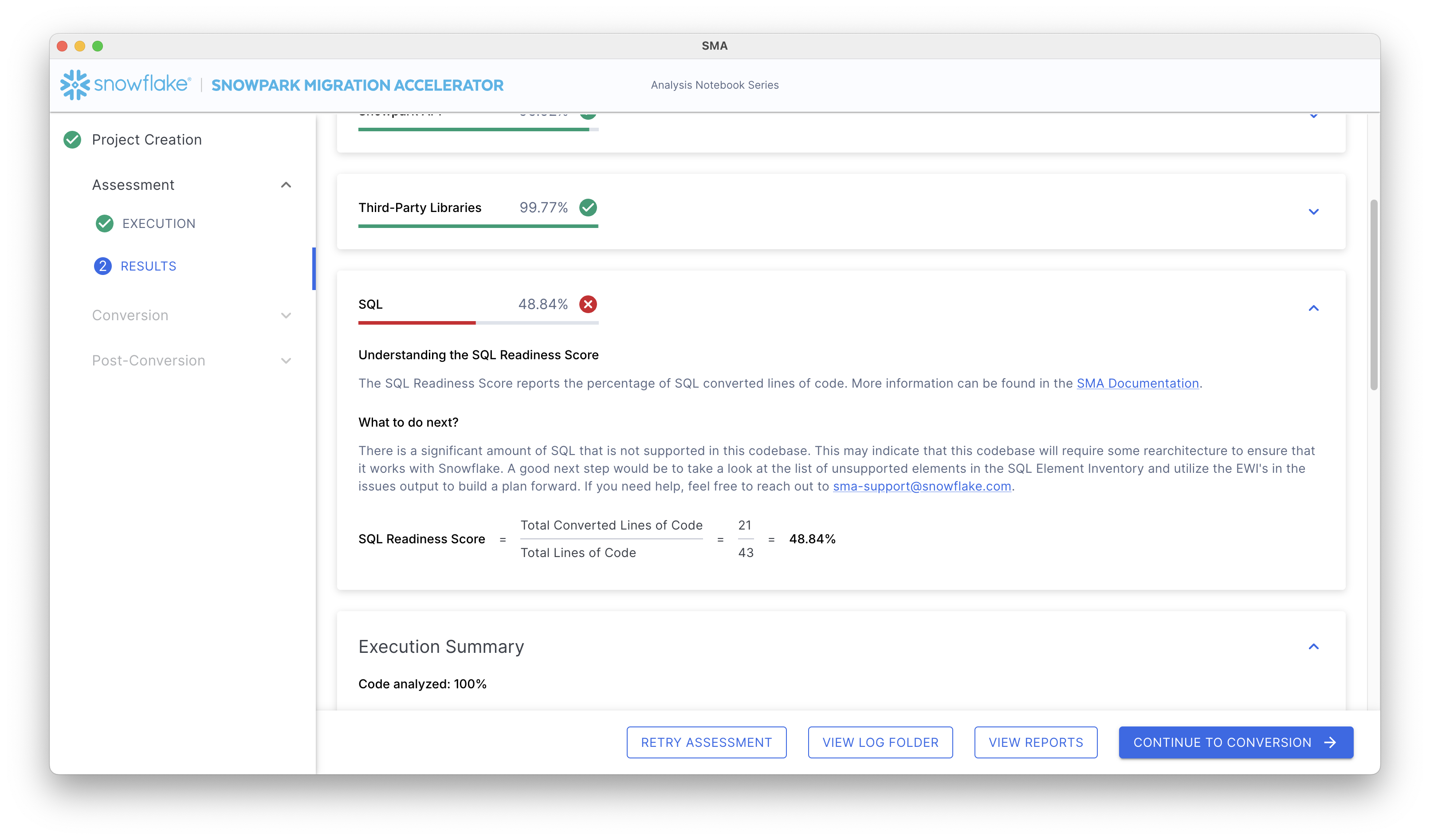
Note
Important Information:
A high readiness score, even 100%, doesn’t guarantee immediate migration success. It indicates that the Spark API references are compatible with Snowflake, suggesting good potential for migration to Snowpark.
The readiness score you see may be different from this example because you might be using a different version of the tool, and the source code in these public repositories can change at any time since they’re not controlled by Snowflake.
Depending on your tool version, you may see additional readiness scores. For details on understanding these scores, please refer to the current list of readiness scores.
The readiness scores are the most important information to review in the application. While other summaries are briefly covered, you can find detailed information about what the readiness scores mean in the conclusions from the assessment summary section below.
Other Summaries
Execution Summary
If you continue scrolling down, you will see the execution summary section.

The execution summary provides details about the current process. While this information can be helpful when troubleshooting issues with the SMA team, you don’t need to review it at this time.
Issue Summary
Below the readiness scores, you can find a detailed issue summary by scrolling down the page.

The issue summary identifies warnings, conversion errors, and parsing errors detected by the tool. Understanding these issues is crucial for a successful conversion. While detailed information about the issue summary is available in The issue summary section in this documentation, we will explore its practical application later in the conversion walkthrough. You can skip this section for now and continue with the assessment process.
Conclusions from the Assessment Summary in the Application
Before proceeding, we need to evaluate several key aspects:
Readiness Level (Compatibility with Snowpark) The assessment shows a Readiness Score of 95.22% (your result may vary based on your tool version). Scores above 80% indicate high Snowpark compatibility, suggesting that migration is recommended for this codebase. To understand the full compatibility picture, we need to examine the complete assessment results in the output folder.
Size of the Spark footprint/impact on this codebase The analysis found 3,746 total Spark API references, with 3,541 automatically supported for conversion. This leaves only 205 references requiring manual conversion. While the total codebase size is unknown, the small number of unsupported references suggests a manageable evaluation effort. These 205 references likely follow a few common patterns, making them easier to assess. The actual conversion effort will be determined during the migration phase.
Based on the analysis, this codebase appears to be well-suited for migration from Spark to Snowpark, with minimal effort required to complete the conversion. Let’s examine the remaining output to confirm this assessment.